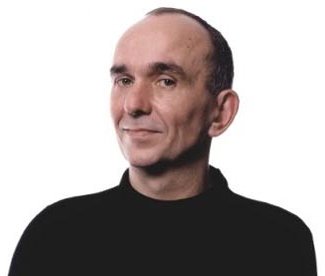GDC 2009: Fable's Peter Molyneux plays with portals
Lionhead founder explains his studio's innovation process and demos a number of successful and unsuccessful experiments.
SAN FRANCISCO--Peter Molyneux is perhaps known as much for Lionhead Studios' hit franchises such as Fable and Black & White as the often radical, overblown, or undelivered features these games were promised to feature. Be that as it may, his studio actually actively courts innovation through a program known as Lionhead Experiments, and the eminent game designer detailed this program, as well as a number of projects to come out of it, during a session at the 2009 Game Developers Conference today.

Molyneux began by explaining the background of Lionhead Experiments, saying it was born from the studio's first project, Black & White. Molyneux said that development on the title was "utter and complete chaos" because "some guy named Pete" would routinely derail the team by proposing new design features and ideas. One "dumb and stupid" idea that derailed the team, he said, was incorporating weather patterns inside the game that reflected those outside gamers' windows.
"Innovation is what our audiences really want," Molyneux said, so Lionhead decided to implement the program to control the influx of ideas so that they wouldn't negatively impact development. He also noted that it was important to develop innovative ideas because if there is no channel for a designer to pursue these experiments, "they leave your company and go do it elsewhere."
Providing a rough overview, Molyneux said the program provides a fast way of prototyping risky ideas from Lionhead team members. They are short-term affairs, lasting on average about four weeks, and typically have one to five people participating.
Any member of the staff can propose an experiment, Molyneux said, but they will need to find a senior member to act as a sponsor for it. The sponsor then sells the idea to Lionhead's creative board, and, if approved, it is scheduled in the same way as any other project, with milestones and checkpoints.
Projects primarily manifest in one of two ways. Since not everyone at the company is of the programming persuasion, Lionhead has a prototyping engine that strips away all unnecessary code, so much so that even someone unfamiliar with programming can build out their idea. Alternatively, experiments can be conducted using one of Lionhead's existing game engines.
Lionhead also has a program that Molyneux called "Concrete," which is designed to allow any asset from a game--be it a graphic, animation, or piece of code--to be intermingled within an asset from another game. Molyneux gave the example of taking trees from one game, a village from another game, and the AI from yet another game, and then combining them all into one project. He noted that the system "is still a dream" at this point, but a work in progress.
Once the project is prototyped, the creative board is given a full breakdown with risk assessment. If it is greenlit, the original creator is integrated into the full development team, designers are briefed so it is fully utilized, and a patent is filed, if applicable.
Molyneux then gave examples of some of the experiments that have come out of this project. The first was one of Fable II's most notable characters, the dog. Originally, the dog was planned to feature a punishment and reward mechanic. However, once prototyped, the dog didn't feel natural, he said, and they realized a better focus would be on the bonding elements of the player and the animal. Molyneux notes that had they not prototyped this feature, which took about two weeks, they wouldn't have realized it was not such a great mechanic until a year down the road.
The Lionhead head then ran through a number of other prototypes, ranging from Fable II's one-button combat to lighting based on ray-tracing technology to deformable skin to water mechanics to using a graphics processing unit to render thousands of animations and creatures at a time. Of the last experiment, Molyneux said that it was too late to implement in Fable II, but the studio may end up using it in the future.
Easily the most interesting experiment, and one that didn't actually pan out, was called The Room. Conducted by several members of the team who left Lionhead to form Media Molecule (of Little Big Planet fame), The Room was essentially a highly detailed workspace that resembled any given room in Fable II.
However, in the room, the creators came up with two other features. The first, Molyneux detailed, was called clay, which was essentially a nondescript cube that could be transformed, block by block, into an in-game object. For example, Molyneux demonstrated how a 2-by-3 clay box would turn into a TV, or a 2-by-1 box would become a bowl of oranges.
The Room also demoed technology called portals. Molyneux noted that the demo was created several years before Valve's highly praised The Orange Box's pack-in puzzler Portal was released but that the system played out much in the same way.
Adding a wrinkle to Portal's mechanic, however, Molyneux demonstrated how objects dropped into a smaller portal--in this case, a mirror--would grow after coming out of a larger portal. The enlarged object could then be dropped through the small mirror once more to become an even bigger object. At this point, Molyneux inadvertently dropped the small mirror into the large mirror, and the demo crashed. He did note, however, that Lionhead plans to incorporate this gameplay mechanic into its future titles.
Got a news tip or want to contact us directly? Email news@gamespot.com
Join the conversation